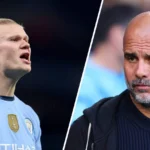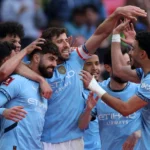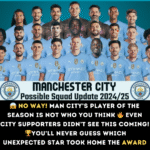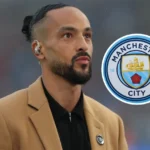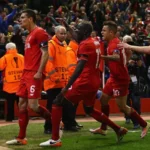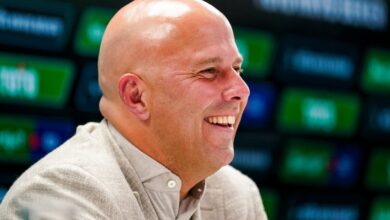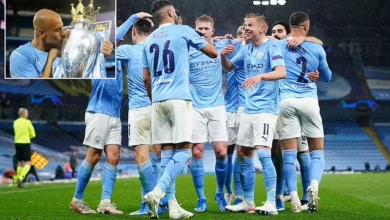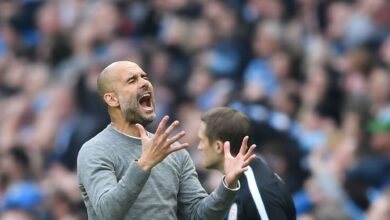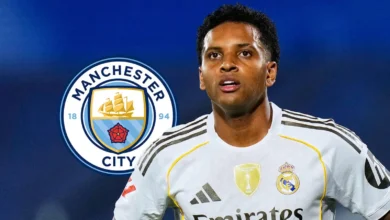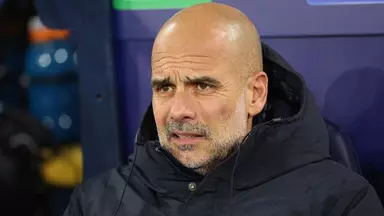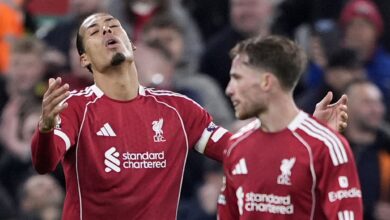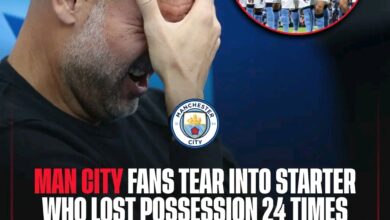Manchester City’s Season: Gvardiol’s Rise and Summer Transfer Plans
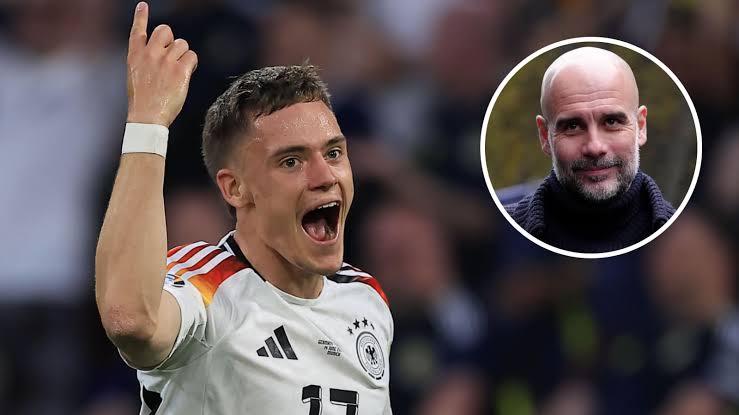
In what has become one of the most intriguing storylines of Manchester City’s 2024/25 campaign, Pep Guardiola’s assessment of his squad’s most valuable player has raised eyebrows throughout the football world. The Spanish tactician’s declaration that Croatian defender Josko Gvardiol has been more crucial than Erling Haaland this season represents a significant shift in perspective at the Etihad Stadium, one that speaks to both the evolving nature of City’s tactical approach and the specific challenges they have faced throughout this campaign.
“I think Josko has been our most important player this season,” Guardiola stated emphatically during a recent press conference. “Without Josko, it would be impossible to sustain; he has been reliable to play every three days during eleven months, in the good and bad moments. Josko has been top.” This praise, coming from a manager known for his measured assessments of player performance, carries considerable weight and highlights the Croatian’s transformation from an expensive acquisition to an indispensable squad member.
Gvardiol’s journey to this position of prominence has been remarkable. Arriving at Manchester City for a substantial £77.6 million from RB Leipzig in the summer of 2023, the 23-year-old faced the inevitable pressure that accompanies such a significant investment. However, his adaptation to Guardiola’s system has been exemplary, with 49 appearances across all competitions this season demonstrating both his physical resilience and tactical intelligence.
The defender’s versatility has proven particularly valuable in City’s tactical framework. Whether deployed in his natural center-back position or utilized as an inverted full-back on the left flank, Gvardiol has consistently delivered performances that have caught the attention of both teammates and opponents. His defensive solidity has been complemented by an unexpected offensive contribution, with five Premier League goals making him the top-scoring defender in the competition this season.
This attacking threat from defense has become increasingly important in Guardiola’s tactical evolution. The modern game demands defenders who can contribute meaningfully in the final third, and Gvardiol’s ability to time his runs into the box, combined with his aerial presence and technical ability, has added a new dimension to City’s attacking patterns. His goals have often come at crucial moments, providing the kind of unexpected scoring sources that can prove decisive in tight matches.
Haaland’s Complex Campaign: Success and Scrutiny
The contrast between Gvardiol’s universal praise and the mixed reception to Erling Haaland’s season illustrates the complexities of modern football evaluation. Despite accumulating 30 goals across all competitions—a tally that would be celebrated at virtually any other club—the Norwegian striker has faced sustained criticism for his overall impact and consistency levels.
Haaland’s own admission that he “has not been good enough” provides insight into the standards expected at Manchester City. The striker’s self-assessment reflects an understanding that modern forwards are evaluated on more than just goal tallies. Movement, link-up play, pressing intensity, and the ability to influence games even when not scoring have become equally important metrics in the contemporary game.
The 24-year-old’s struggles have been particularly noticeable in high-profile matches where his physical presence and movement have seemed less imposing than in previous seasons. There have been games where Haaland has appeared isolated from City’s build-up play, creating fewer chances for himself and providing less assistance to his teammates’ attacking movements. This has led to questions about whether City’s tactical approach has evolved in a way that doesn’t maximize Haaland’s unique strengths.
However, it’s crucial to maintain perspective on what constitutes a disappointing season for a player of Haaland’s caliber. His 30 goals represent a strike rate that most forwards would envy, and several of these have come in crucial moments. The criticism perhaps speaks more to the impossibly high standards set during his record-breaking debut season than to any significant decline in his abilities.
Former Liverpool defender Jamie Carragher has been vocal in his defense of Haaland, arguing that the striker remains City’s most influential player despite the criticism. Carragher’s perspective highlights the subjective nature of player evaluation and the different lenses through which performances can be analyzed. While some focus on Haaland’s moments of invisibility, others point to his continued ability to deliver decisive contributions when required.
The debate surrounding Haaland’s season also reflects broader questions about City’s attacking philosophy. Has the team’s evolution under Guardiola moved away from the direct, physical approach that best suits Haaland’s strengths? Or are the criticism and perceived struggles simply part of the natural adjustment process as both player and team continue to develop their understanding of each other?
Tactical Innovation: The Left-Back Evolution
Perhaps no position has exemplified Guardiola’s tactical flexibility more than left-back this season. The Spaniard’s decision to primarily deploy Josko Gvardiol in this role, despite his natural center-back position, demonstrates both the shortage of specialist options and the creative solutions that have become synonymous with his management style.
Gvardiol’s adaptation to the left-back role has been seamless, bringing a unique skill set to the position. His pace and recovery speed allow him to provide width in attack while maintaining the defensive security necessary when City lose possession. The Croatian’s left foot and crossing ability have added a new dimension to City’s attacking patterns from the left flank, while his defensive instincts ensure he’s rarely caught out of position.
More recently, Guardiola has experimented with an even more unconventional solution: deploying 20-year-old midfielder Nico O’Reilly at left-back. This move, which might have seemed desperate on paper, has proven remarkably successful over the past month. O’Reilly’s technical ability and understanding of Guardiola’s positional play principles have translated well to the defensive role, creating an intriguing tactical option for the future.
The success of these makeshift solutions raises interesting questions about modern football and the value of positional specialism versus tactical intelligence. Both Gvardiol and O’Reilly have succeeded in unfamiliar roles because they possess the technical and tactical foundations that allow them to adapt quickly to new positional demands.
However, this approach also highlights an area where City require reinforcement. While Guardiola’s ability to find creative solutions is admirable, having specialist full-backs would provide greater tactical flexibility and reduce the burden on players asked to perform outside their natural positions.
The left-back situation has also revealed the depth of Guardiola’s tactical thinking. By using center-backs and midfielders in the role, he has maintained the technical quality and passing ability that are crucial to City’s build-up play. Traditional left-backs might offer greater pace or crossing ability, but they might not possess the passing range and positional understanding that Guardiola demands from his defenders.
Young Talent Development: O’Reilly’s Emergence
Nico O’Reilly’s rise this season represents another success story in Manchester City’s youth development program. The 20-year-old’s seamless transition to left-back demonstrates both his individual quality and the effectiveness of City’s coaching methods in developing versatile, tactically intelligent players.
O’Reilly’s adaptation has been aided significantly by the mentorship of Josko Gvardiol, with the young midfielder acknowledging the Croatian’s influence on his development. “He has helped me so much in training this season,” O’Reilly revealed, highlighting the collaborative learning environment that Guardiola has fostered at the club.
This knowledge transfer between players represents a crucial aspect of City’s development philosophy. Rather than relying solely on coaching staff, the club encourages experienced players to share their expertise with younger teammates. This approach not only accelerates individual development but also strengthens squad cohesion and creates a culture of continuous learning.
The situation with O’Reilly also illustrates some of the challenges facing modern football development. While Guardiola envisions the youngster’s future as a defensive midfielder—a number six in the Spanish coach’s terminology—O’Reilly himself harbors ambitions of playing in a more advanced role. This disconnect between coaching vision and player ambition requires careful management to ensure continued development and satisfaction.
Guardiola’s track record with player development suggests he will find a way to balance these competing interests. His history of successfully converting players to new positions—from Mascherano’s move to center-back at Barcelona to Lahm’s transition to midfield at Bayern Munich—provides confidence that O’Reilly’s development will continue progressing positively.
The emergence of O’Reilly also raises broader questions about City’s squad planning and the role of academy graduates in the first team. His success at left-back demonstrates that sometimes the best solutions come from within, but it also highlights the importance of giving young players opportunities to develop and prove themselves.
Summer Transfer Strategy: Targeting Defensive Reinforcements
Manchester City’s transfer strategy for the upcoming summer window appears focused on addressing specific positional needs rather than pursuing wholesale squad changes. The left-back position has emerged as a clear priority, with the club linked to several high-profile targets who could provide both immediate impact and long-term value.
Rayan Ait-Nouri of Wolverhampton Wanderers represents one of the most exciting options available. The 23-year-old Algerian international has established himself as one of the Premier League’s most dynamic attacking full-backs, contributing five goals and seven assists across 38 appearances this season. His ability to provide width in attack while maintaining defensive solidity aligns perfectly with the demands of the modern full-back position.
Ait-Nouri’s performances against City this season have been particularly impressive, demonstrating his ability to compete at the highest level. However, his acquisition may prove challenging given Wolves’ determination to retain their best players. Manager Vitor Pereira has been unequivocal in his desire to keep the defender, stating: “He’s a top player and we want to keep our best players. The target is to keep our best players and to bring in not too many players.”
Wolves’ stance reflects the broader challenge facing City in the transfer market. As their reputation and success have grown, so too have the prices demanded for their targets. Clubs are increasingly reluctant to sell their best players to City, knowing the competitive advantage such moves can provide.
Andrea Cambiaso of Juventus presents an alternative option that may prove more attainable. The Italian international has emerged as City’s primary left-back target according to recent reports, having first attracted interest during the January transfer window. Cambiaso’s versatility—his ability to operate effectively on both flanks—makes him particularly attractive to Guardiola, who values tactical flexibility highly.
The Italian’s statistical output, while perhaps less spectacular than Ait-Nouri’s, still demonstrates his ability to contribute in the final third. Two goals and four assists across 40 appearances represent solid returns for a defender, particularly one operating in Juventus’s more defensively-minded system.
Cambiaso’s potential arrival would also address another of City’s needs: right-back depth. The ability to cover both full-back positions makes him an economical option for a club that may be limited in the number of signings they can make due to financial fair play considerations.
The decision between these targets—and potentially others—will likely come down to a combination of availability, cost, and tactical fit. Guardiola’s preference for players who can adapt to multiple roles suggests that versatility will be a key criterion in the final decision.
Broader Squad Considerations: Building for the Future
While the full-back positions have garnered most attention, City’s summer planning extends beyond defensive reinforcements. The club must consider the long-term futures of several key players, many of whom are entering the latter stages of their careers.
Kevin De Bruyne’s injury struggles and age profile raise questions about succession planning in the creative midfield roles. While the Belgian remains a world-class performer when fit, City cannot ignore the need to plan for life after one of their most influential players. The emergence of younger talents like Phil Foden and Jack Grealish provides some options, but neither player exactly replicates De Bruyne’s unique skill set.
Similarly, the futures of several other experienced squad members require consideration. Players like Ilkay Gundogan, who returned to the club after a season at Barcelona, offer valuable experience and tactical intelligence, but their long-term roles may need reassessment as the squad evolves.
The club’s approach to squad building has always been methodical under Guardiola’s guidance. Rather than making dramatic changes, City typically make two or three targeted additions each summer, carefully selecting players who fit both the tactical system and the cultural environment at the club.
This measured approach has proven successful over time, allowing new signings to integrate gradually while maintaining the core group that has delivered unprecedented success. However, it also requires careful planning and sometimes means missing out on targets who might strengthen competitors.
The Recovery: Signs of Renewed Form
Despite the challenges faced throughout the campaign, Manchester City’s recent form provides optimism for the future. Their current nine-game unbeaten run demonstrates the resilience and quality that have made them the dominant force in English football over recent years.
This recovery period has coincided with improved defensive stability, lending credence to Guardiola’s assessment of Gvardiol’s importance. The Croatian’s consistency at the back has provided a platform for the team’s attacking players to express themselves with greater freedom, knowing they have reliable defensive coverage behind them.
The unbeaten run has also seen contributions from across the squad, suggesting that the collective understanding and chemistry that had seemed absent earlier in the season are returning. Players like Foden, Grealish, and even Haaland have shown signs of rediscovering their best form during this period.
Gary Neville’s prediction that City will maintain this improved form against Southampton reflects the broader expectation that the club’s quality will ultimately shine through. The challenge for Guardiola is to ensure this upturn continues through the season’s final weeks and into the next campaign.
Media and Pundit Perspectives: Interpreting the Season
The football media’s assessment of City’s season has been notably divided, reflecting the complex nature of evaluating success at a club with such high standards. While some have focused on the team’s struggles relative to their own lofty benchmarks, others have emphasized the competitive nature of the Premier League and the challenges all teams face.
Jamie Carragher’s continued defense of Haaland represents one perspective within this debate. The former Liverpool defender argues that focusing solely on the Norwegian’s occasional anonymous performances ignores his continued productivity and importance to the team. This viewpoint emphasizes the danger of allowing perfect to become the enemy of good when evaluating elite performers.
Conversely, Paul Merson’s prediction that City “won’t” repeat similar struggles next season reflects confidence in both Guardiola’s ability to address current issues and the inherent quality within the squad. This optimistic outlook is based on City’s track record of bouncing back from relative disappointments stronger than before.
The contrasting opinions among pundits highlight the subjective nature of football analysis and the different criteria by which success can be measured. For a club like City, where success is measured not just in trophies but in the manner of performance, evaluation becomes particularly complex.
Conclusion: Looking Forward
As Manchester City prepare for the final stretch of the 2024/25 season and begin planning for the next, Guardiola’s assessment of Josko Gvardiol’s importance provides a fascinating insight into the evolution of the team. The Croatian’s rise to prominence, achieved through consistency, versatility, and tactical intelligence, embodies many of the qualities that have made City successful under Guardiola.
The challenges faced this season—from Haaland’s struggles to adapt to evolving tactical demands to the makeshift solutions required at full-back—have tested the squad’s resilience and the coach’s tactical flexibility. However, the recent recovery suggests that City have found answers to many of these questions.
The summer transfer window will provide an opportunity to address the remaining areas of concern while maintaining the core strength that has brought such success. Whether through the addition of specialist full-backs or other targeted reinforcements, City appear well-positioned to return to their dominant best.
Ultimately, seasons like 2024/25 serve as reminders that even the most successful teams face periods of adjustment and challenge. How clubs respond to these tests often determines their long-term trajectory. Based on their recent recovery and Guardiola’s assessment of players like Gvardiol, Manchester City appear ready to emerge from this challenging period stronger and more adaptable than before.
The story of this season may ultimately be remembered not for its struggles, but for the way it demonstrated the depth of quality and character within the Manchester City squad. Players like Gvardiol have stepped up when needed, while younger talents like O’Reilly have seized unexpected opportunities. This combination of established excellence and emerging talent provides the foundation for continued success in the seasons ahead.
